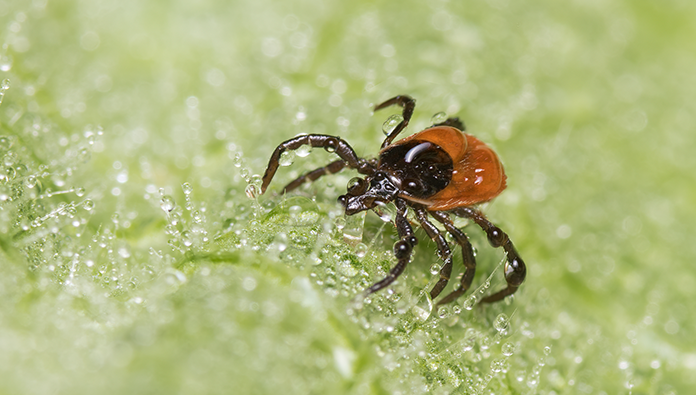Lyme Disease Test With Confirmation
This Lyme disease blood test uses the CDC-recommended two-step process. Consider this test if you have been bitten by an infected tick or have symptoms like “bullseye” rash or fatigue. Included with your purchase, if your test results are abnormal, an independent physician may be able to provide you with treatment options. Read moreFollowing the CDC-recommended two-step testing process, this Lyme disease blood test measures IgM and IgG antibody response to the Borrelia burgdorferi bacteria that cause Lyme disease. If your initial test results are positive, a second test is done to confirm results using the same blood sample.
Lyme disease is a bacterial infection spread through the bite of blacklegged ticks, which are commonly called deer ticks. Ticks usually acquire Borrelia burgdorferi bacteria by biting infected animals, such as deer and small rodents. For Lyme disease to be transmitted, an infected tick needs to be attached to the host for 36 to 48 hours.
Buy your own Lyme disease test online with Quest. No doctor’s visit is required – simply purchase Lyme disease testing, visit a nearby Quest® location for sample collection, and get fast results. Included with your purchase, if your test results are abnormal, an independent physician may be able to provide you with treatment options.
How it works
questhealth.com offers 100+ consumer-initiated Quest Diagnostics lab tests to empower you to have more control over your health journey. Choose from a variety of test types that best suit your needs.
The blacklegged tick spreads the disease in the Northeast, mid-Atlantic, and North Central United States, while the western blacklegged tick spreads the disease on the Pacific Coast.
Several tick types do not appear to transmit Lyme disease, including lone star ticks, the American dog tick, the Rocky Mountain wood tick, and the brown dog tick.
Humans are usually infected through bites from immature ticks known as nymphs, which are extremely small and difficult to see. Nymphs feed in the spring and summer when people are more likely to spend time outdoors. Adult ticks, which are more active during cooler months, can also transmit Lyme disease bacteria, but since they are larger, they are more likely to be discovered and removed before the bacteria can be transmitted.
Lyme disease is a year-round problem, but April through November is considered tick season. Although Lyme disease does not occur nationwide, it may be diagnosed anywhere. In these cases, people often travel between states, and where they live may be different from where they were infected.
In the United States, most infections occur in the following geographical areas1:
- Connecticut
- Delaware
- Maine
- Maryland
- Massachusetts
- Minnesota
- New Hampshire
- New Jersey
- New York
- Pennsylvania
- Rhode Island
- Vermont
- Virginia
- Washington, DC
- West Virginia
- Wisconsin
Ticks cannot fly or jump and can be found on the tips of grasses and shrubs in a variety of outdoor settings, including gardens, lawns, and wooded areas, particularly near trails. Blacklegged ticks are prevalent in wooded, brushy areas where rodents, deer, and other mammals can find food and shelter.
You may be at greater risk for Lyme disease if you live in an area where the disease is more prevalent. Tick bites are most common among campers, hikers, and people who work in gardens and other leafy outdoor environments.
The best defense against Lyme disease is to reduce tick exposure, including taking steps such as the following:
- Treat clothing, boots, camping, and hiking gear with products containing 0.5% permethrin, a pesticide
- Examine your clothing and equipment for ticks
- Check your whole body for ticks daily, including your belly button, hair, ears, and any places that may be difficult to see
- Check pets daily for ticks
- Be alert for fever or rash
- After being outdoors, take a shower as soon as possible
- Remove ticks promptly and correctly
References
1Centers for Disease Control and Prevention, National Center for Emerging and Zoonotic Infectious Diseases (NCEZID), Division of Vector-Borne Diseases (DVBD). Last reviewed April 29, 2022. www.cdc.gov/lyme/datasurveillance/maps-recent.html
Learn more
Centers for Disease Control and Prevention, National Center for Emerging and Zoonotic Infectious Diseases (NCEZID), Division of Vector-Borne Diseases (DVBD). Last reviewed May 13, 2022. How to remove a tick. https://www.cdc.gov/ticks/removing_a_tick.html




